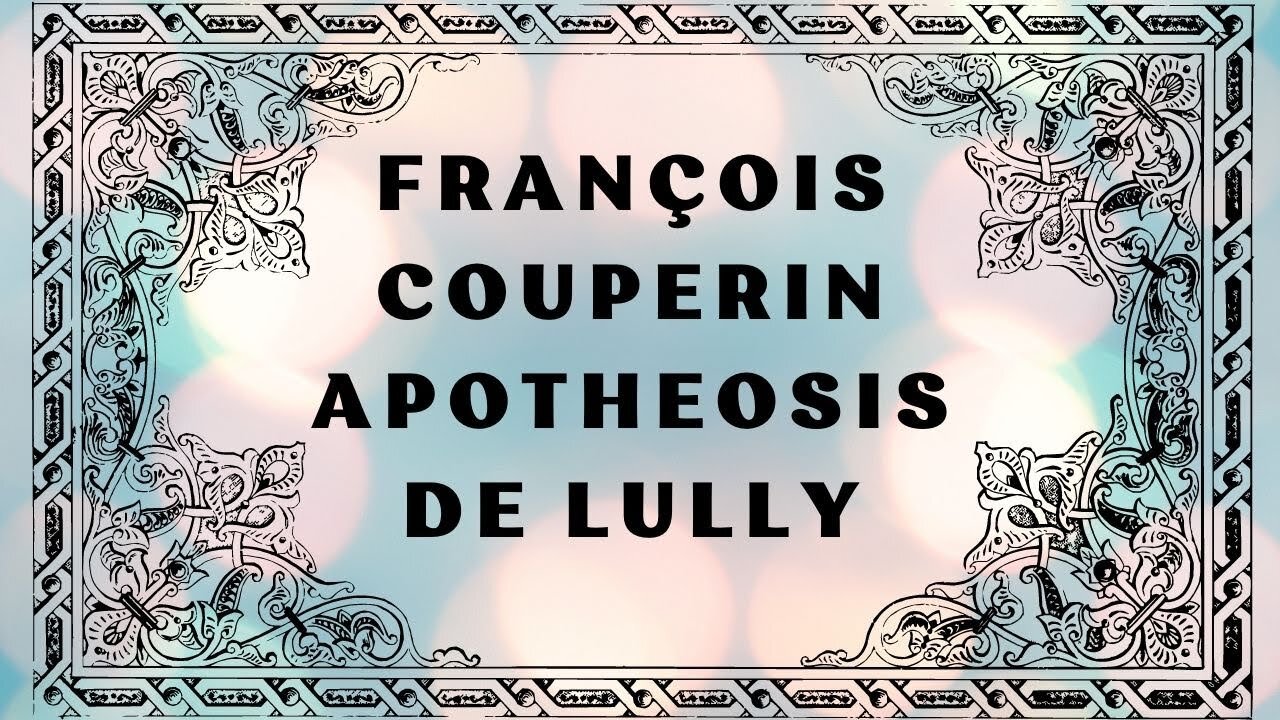Premium Only Content

Francois Couperin's "Apotheosis of Lully"
Francois Couperin's "Apotheosis of Lully" is a stunning musical work that pays tribute to the great French composer Jean-Baptiste Lully. Couperin, a renowned composer and harpsichordist, was known for his sophisticated and elegant style, and this work is no exception.
The "Apotheosis of Lully" was written in 1725, three years after Lully's death. Lully was a prominent figure in French Baroque music, and his contributions to the art form were significant. Couperin's work was a tribute to Lully's legacy, and it was intended to showcase the beauty and power of his music.
The work is divided into three parts: a prelude, an overture, and a chaconne. The prelude sets the tone for the rest of the work, with its lively and upbeat melody. The overture is a grand and majestic piece, featuring a prominent horn section and a regal melody. The chaconne is the final movement and is based on a repeating chord progression, with variations and ornamentation added to keep the music fresh and interesting.
One of the most remarkable aspects of the "Apotheosis of Lully" is its use of musical symbolism. Couperin included several references to Lully's works, including quotes from his operas and ballets. This not only pays homage to Lully but also adds depth and meaning to the work.
Another notable aspect of the "Apotheosis of Lully" is its use of instrumentation. Couperin was known for his skillful use of the harpsichord, and this work features the instrument prominently. However, he also included other instruments, such as horns and strings, to create a rich and varied sound.
Overall, Francois Couperin's "Apotheosis of Lully" is a beautiful and intricate musical work that pays tribute to one of the greatest French composers of all time. Its use of symbolism, instrumentation, and musical structure make it a masterpiece of Baroque music. If you are a fan of classical music or want to explore the works of Couperin and Lully, this is a must-listen piece.
-
 48:22
48:22
Classical music_Music Inspiration
1 month agoHector Berlioz Fantastic Symphony
701 -
 18:11
18:11
Actual Justice Warrior
3 hours agoMamdani Is In BIG TROUBLE
8.08K10 -
 LIVE
LIVE
J0hnThunder
1 hour ago🚨 Robocop: Unfinished Business ( DLC ) 🚨 || Serve the Public Trust || Part 2
37 watching -
 1:08:18
1:08:18
VapinGamers
2 hours ago $0.17 earnedTools of the Trade - Almost Box Fresh EP-01a - !rumbot !music
3.23K1 -
 LIVE
LIVE
Astral Doge Plays!
4 hours agoDonkey Kong Bananza ~LIVE!~ Let's Go Bananas in This Bananza!
80 watching -
 3:24:34
3:24:34
Sgt Wilky Plays
4 hours agoDonkey Kong Bonanza and Coffee
1.72K1 -
 18:58
18:58
Clownfish TV
7 hours agoColbert CANCELLED. YouTube Blamed.
7.61K30 -
 LIVE
LIVE
AyeDeon
2 hours agoRage Induced Saturday ft. Call Of Duty
21 watching -
 15:55
15:55
T-SPLY
19 hours agoIllegal Immigrant Fakes Her Own Kidnapping - Blames DHS!
3.99K4 -
 14:47
14:47
IsaacButterfield
8 hours ago $0.17 earnedThe Mushroom Murderer: Australia’s Most Evil Woman
4.02K1